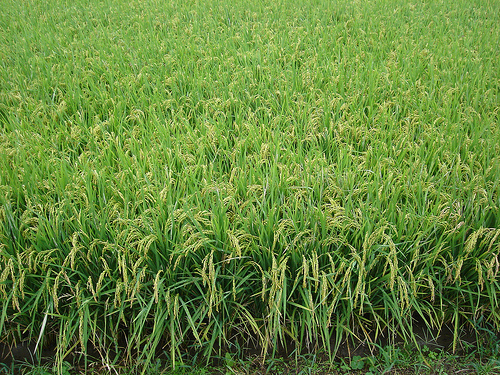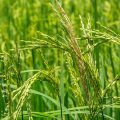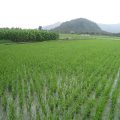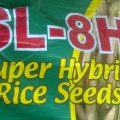The rice sector of Region 3 is prepared for the ASEAN integration in light of a high 5.25 metric tons (MT) average yield owing to a strong government-private sector collaboration on hybrid rice.

While it is not being so recognized by the national government, Region 3 accounts for more than 70 percent of total rice incremental yield in the Philippines, according to Department of Agriculture (DA) Region 3 Chief Andrew B. Villacorta.
This is based on the 360,000 MT of rice it brought to the national production as of 2014.
A collaboration between Region 3-Department of Agriculture, local government units (LGU) as those of national rice granary Nueva Ecija and Tarlac, and private seed companies led by hybrid rice pioneer SL Agritech Corp (SLAC).
Region 3’s 360,000 MT of increase in yield accounts for 72 percent of the 500,000 MT total increase in yield in the Philippines in its 2014 rice production of more than 19 million MT.
Incremental yield mainly comes from two factors—increase in area and good seed. While there may not be a significant increase in physical rice area, much of the increase in yield comes from the use of good seeds, particularly hybrid rice.
“We saw a joint effort of the local government, national government, private sector. We have a good working relationship,” Villarcorta said at a harvest festival of SLAC in La Paz, Tarlac.
For one, the municipal government of La Paz, Tarlac led by Mayor Michael M. Manuel granted a P1,000 per bag per hectare subsidy to farmers. Tarlac province LGU gave a similar P1,000 subsidy, and DA, P1,200, per hectare.
As there is no significant increase in the physical area, hybrid rice area in Region 3 expanded substantially in this current 2015 dry season (DS) to 84,000 hectares, a 64.7 percent growth from the 2014 DS area .
Technology will be a pivotal key in Philippines’ emerging as competitive for the ASEAN (Association of South East Asian Nations) integration.
“Because of hybrid rice, we’re able to export rice seeds to Vietnam. PNG (Papua New Guinea) is a big area. It has been importing from Australia. Now we have proven people wrong that rice cannot grow in PNG,” said SLAC Chairman Henry Lim Bon Liong.
A sizable hybrid rice area in Region 3, and in the entire Philippines, is supplied with mainly SL-8H seeds, at a rate of 60 to 70 percent.
Compared to national average yield at less than four MT per hectare, that of Region 3 is significantly higher at 5.25 per MT which is making Region 3 internationally competitive.
“Asst. Sec. (Edilberto) De Luna mentioned (in the same harvest fest) that he is being asked if we’re ready for the ASEAN integration. In Region 3, we’re ready. Based on BAS data, we’re the only one that has a yield of 5.25 tons per hectare,” said Villacorta. BAS stands for Bureau of Agricultural Statistics.
Cost of producing a kilo of rice in Region 3 is now competitive at a low of P8.57 per kilo compared to the national average production cost of more than P10 per kilo.
Tarlac Gov. Victor A. Yap is pushing for a three-year memorandum of agreement (MOA) between various agencies to institutionalize support for hybrid rice even if administrations will have changed within this period.
“It’s good that now DA recognizes that to incentivize production, we have to give subsidy which is an important help to farmers in times when income is low,” said Yap.
“With its new invention, SL-8 raises production to attain 120 to 160 cavans. This three-year MOA will make it easy for the next administration to adopt a policy supporting hybrid rice.”
Tarlac is providing assistance to farmers mechanized harvesters to supplement its hybrid rice subsidy.
“Hybrid rice is good. It will be better if there is mechanized harvest, production increases by 20 percent. Mechanization and right breeding and genetics are important. I realize why it’s important to have these in the hand of businesses who make sure there are standards and quality in the supply of technology. There is supply sustainability,” Yap said.
Some LGUs refuse to supply their farmers with pre and post-harvest machines because of fear of displacement of labor.
“But here in Tarlac, we’re growing manufacturing along with agriculture where there is a need for more skilled labor (that may be displaced by mechanization),” said Yap.
Tarlac Third District Rep. Noel L. Villanueva said in the same harvest festival that he is pushing for the approval of the Balog Balog irrigation project in Tarlac in order support hybrid rice farming.
This will be a major help to Tarlac farmers where a national irrigation system (NIS) is needed to boost farm production, particularly rice, while supporting other sectors through its co-generated power supply.
The Balog Balong NIS will provice year-round water for 39,150 hectares. It will supply Concecpion, Gerona, Pura, Ramos, Paniqui, La Paz, Victoria, and Tarlac City.
For any questions or interview requests, kindly contact 0999-573-7077 or 0917-671-1596.






